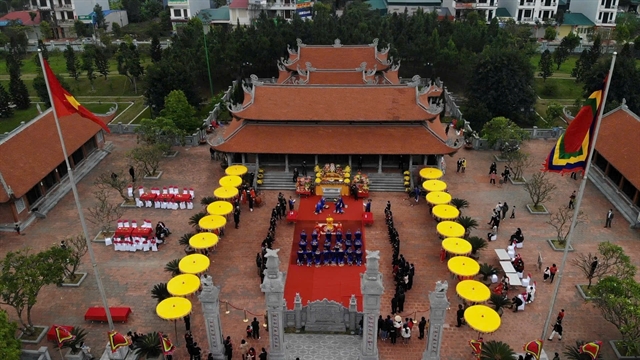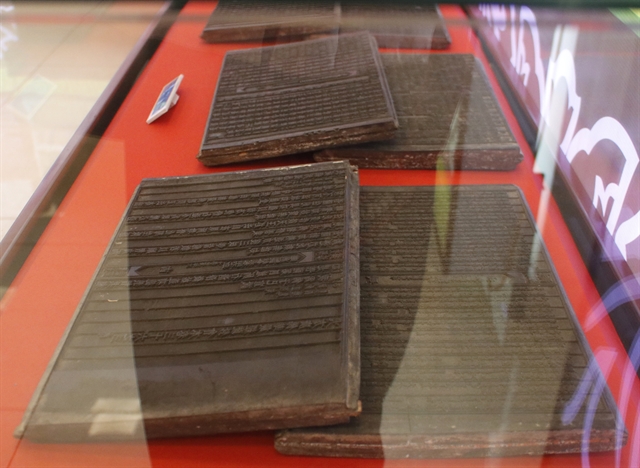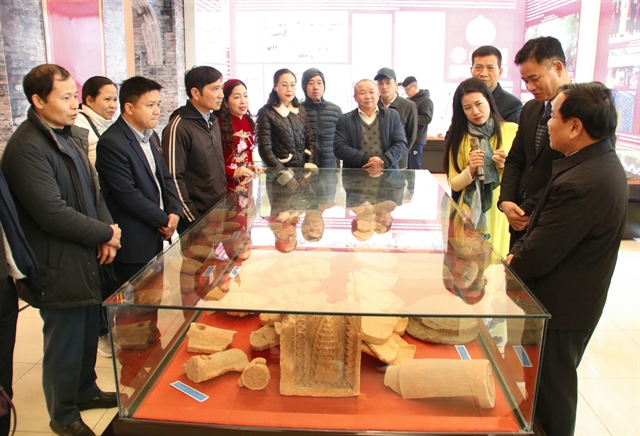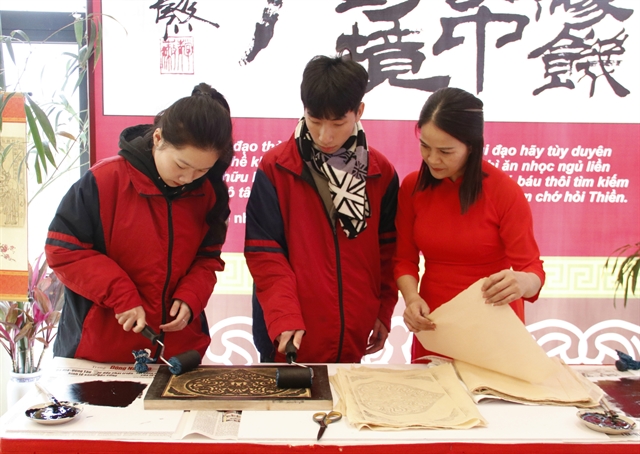 Life & Style
Life & Style

 |
| The exhibition showcases some of the Vĩnh Nghiêm Pagoda's woodblocks recognised by UNESCO as World Memory Heritage of the Asia-Pacific region. VNS Photos |
BẮC GIANG — The northern mountain province of Bắc Giang's Department of Culture, Sports and Tourism has recently opened an exhibition showcasing Trúc Lâm Yên Tử Buddhist images and artefacts made under the Lý Dynasty through the Trần Dynasty (1400-1900).
The event, themed Con Đường Hoằng Dương Phật Pháp của Các Vị tổ Phật Giáo Trúc Lâm Yên Tử (The Propagating Path of Trúc Lâm Yên Tử Buddhism Patriarchs), took place at Tây Yên Tử Spiritual Ecological Tourism Area in Sơn Động District.
It aimed to promote the value of Bắc Giang Province's cultural heritage as well as the profound ideology of Trúc Lâm Yên Tử Buddhism, educating people about patriotism and national pride and raising awareness about preserving the local culture among local communities.
At the same time, the exhibition also aimed to promote the potential for investment, attracting funds to develop cultural and spiritual tourism and building a tourism brand with the theme 'To The Sacred Land of Tây Yên Tủ following the Footsteps of The Buddhas', according to the organisers.
More than 50 images and over 100 artefacts selected from 11 archaeological excavation sites at historic areas from the Lý through Trần dynasties are on display at the exhibition.
The excavation sites were mostly located in seven localities in the province: Bắc Giang City, the districts of Lục Nam, Lục Ngạn, Yên Thế and Lạng Giang, and Chũ and Việt Yên towns.
Organisers said the artefacts are valuable material evidence confirming the prosperous and widespread development of Lý-Trần Buddhism in the Tây Yên Tử mount area today.
The artefacts are also regarded as a scientific basis for Bắc Giang Province to continue restoration work and research on the origins of Trúc Lâm Yên Tử Zen Buddhism and how it spread in ancient times.
In addition, the event's organising board provided a Buddhism woodblock printing space to introduce and honour the cultural value of the woodblock carving tradition.
In his opening speech, deputy director of Bắc Giang's culture department Nguyễn Sĩ Cầm said: "Since the Lý Dynasty moved the capital to Thăng Long in 1010, Bắc Giang has become a land with an important strategic position, playing the role as a northern 'fence' protecting the citadel."
The province since then has been closely associated with the national process of building and defending, according to Cầm.
"Under the Lý through Trần dynasties, this place became an important Buddhist centre, marking the brilliant development of the Trúc Lâm Yên Tử Zen," he said.
 |
| Visitors learn about the artefacts displayed at the exhibition. |
The cultural heritage of Bắc Giang during the Lý through Trần dynasties are presented in terms of tangible and intangible features.
Tangible culture includes architecture, such as the ancient pagodas and towers of Vĩnh Nghiêm, Am Vãi, Hồ Thiên, Mã Yên and Hồ Bấc, which not only bear longstanding historical and cultural value, but also reflect the prosperity of Trúc Lâm Yên Tử Buddhism.
These works were built, restored and developed by Trúc Lâm Yên Tử Zen founders, creating a large space for practicing and propagating Buddhism.
In terms of intangible culture, the thoughts and philosophies of Trúc Lâm Buddhism are preserved in Bắc Giang, deeply influencing the spiritual life and culture of the region and the nation as a whole.
In particular, the philosophy, language and literature of Buddhism in the Lý-Trần period with its unique ideology have contributed to creating an important foundation for the country's literature. At the same time, it plays a huge role in defending the country, fostering patriotism and national pride. VNS
 |
| Visitors try out woodblock printing at the exhibition. |